 • RT6a2 • Pan Connection Drills
• RT6a2 • Pan Connection Drills
See More pans for a lesson/tutorial about this test.
Demonstration
TODO
Procedure
This test is about patterns. The general idea is applicable to any scale or arpeggio shapes, but here it’s applied to the triple frying pan Am pentatonic shape.
This proficiency test is for Am pentatonic specifically, but you should, of course, practice in other keys as well.
The drills are:
Linear ascent and descent through all three octaves.
Sequences of three
Sequences of four
Playing in thirds
Again, all three exercises can (and should) be practiced with any scale or arpeggio shape.
First perform all tests with quarter notes at 120 BPM. When you are comfortable, test yourself with eighth notes at 120 BPM.
Linear ascent/descent
Always start and end on a root note (this helps you associate the sound of the root with the scale). Note how the ascending drill ascends to the high E at the 12th fret, but then continues back down to the root at the 10th fret of the B string.
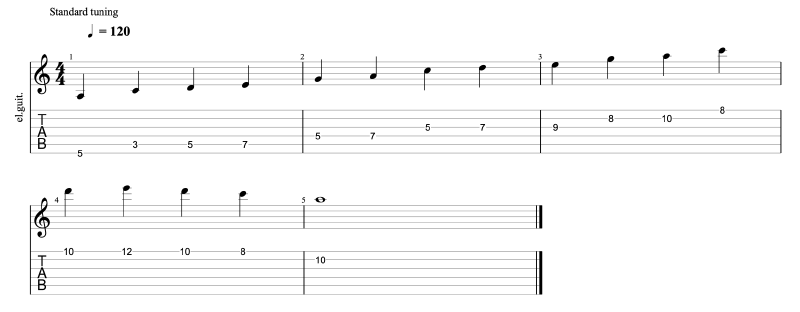
Drill 1: Ascending
Try sliding your third finger up the handle of each frying pan. That is, slide your ring finger from each D to E — your index finger will automatically be in just the right place to play the G on the next string. Thousands of great guitarists use this legato technique to quickly and fluidly move between positions.
Next bend the D to the E instead of sliding.
When you first attempt this exercise (at slower tempos) say the note names (or interval names) out loud.
Now descending:
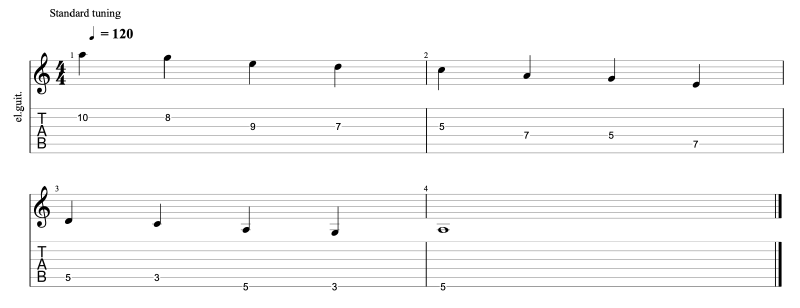
Drill 1: Descending
This time, try sliding down from D to C with your index finger in each shape. You can also “pre-bend” to E, then relax the bend to play the D. Experiment with bends and slides between G and A as well as C/D/E.
Sequences of three
Next up is sequences of three notes:
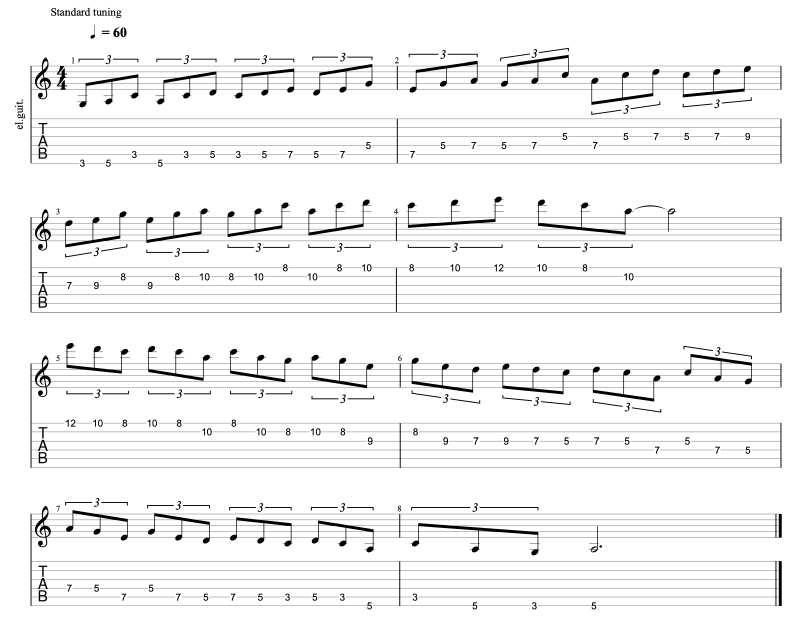
Drill 2: Sequences of three
It’s not strictly necessary to always start and end on root notes with this pattern, but you may find yourself wanting to anyway, because it sounds better!
As you build up speed, you’ll probably recognize the sound of this pattern from professional solos.
Four at a time.
Now sequences of four at a time:
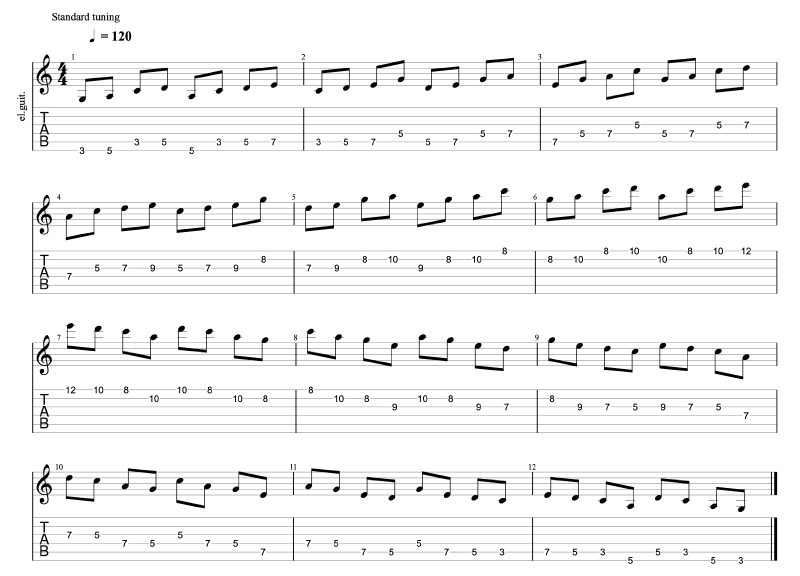
Drill 3: Sequences of four
Moving in thirds
Moving in thirds (every other note in a scale) is a great way to get the shape into your head and under your fingers.
Some of these intervals aren’t technically thirds (because this is a pentatonic scale and some of the notes are more than a whole-step apart)
Regardless, playing every other note this way forces your brain to “see” the shape and break out of only playing sequential patterns.
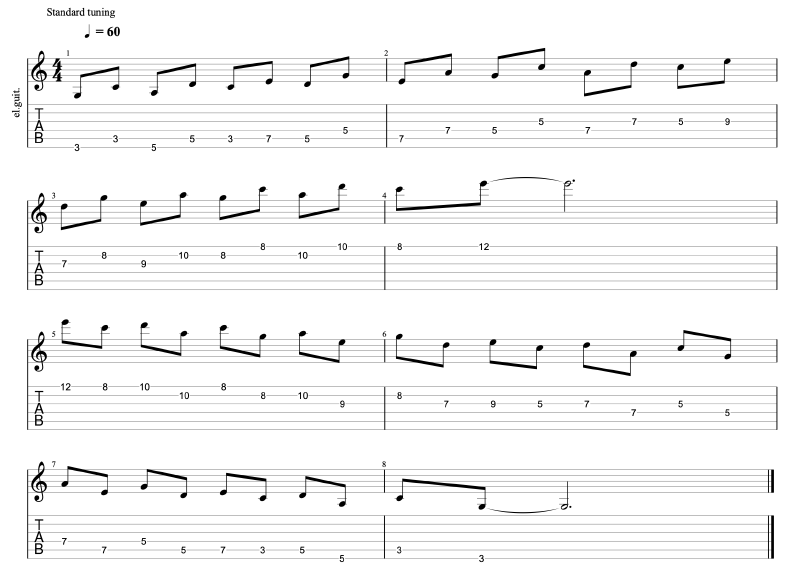
Drill 4: Movement in thirds
Pass criteria
You can play all of the exercises with eighth notes at 120 BPM without any mistakes.
Extra credit
You can play the exercise in every key (not just Am) and faster than 120 BPM.